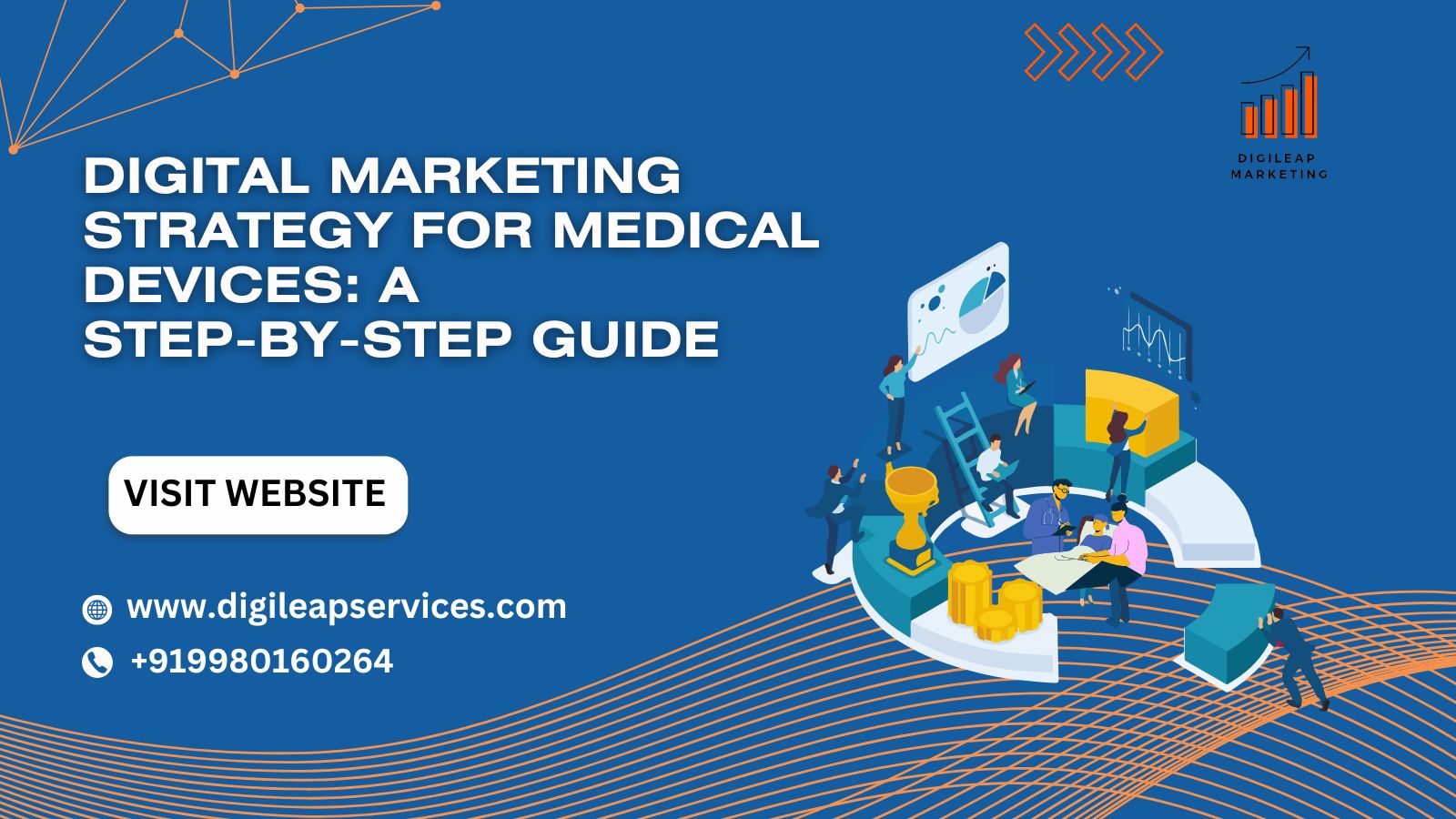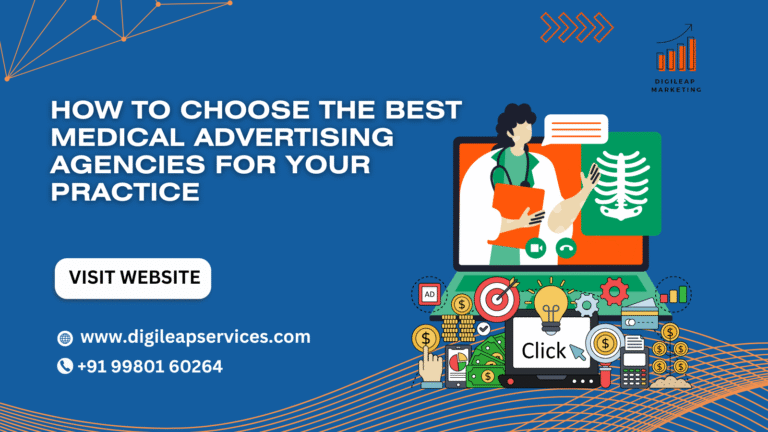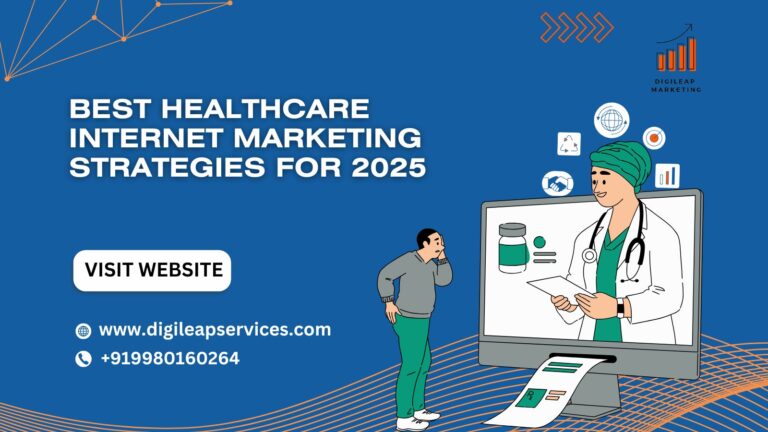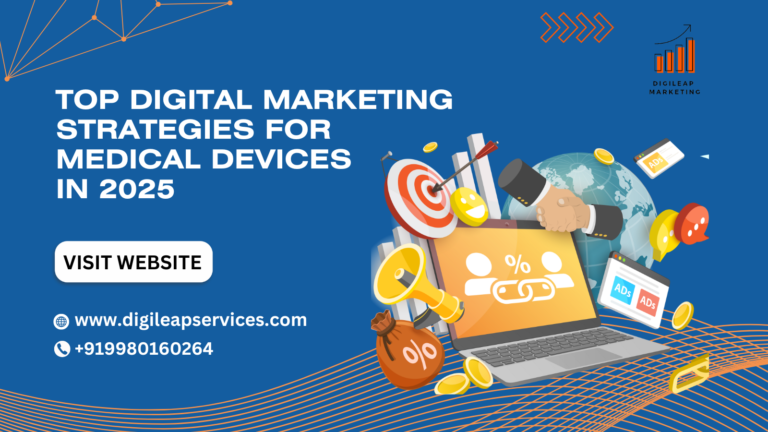Digital Marketing Strategy for Medical Devices: A Step‑by‑Step Guide
Why Digital Marketing for Medical Devices Is a Must
In the fast-growing healthcare sector, having a robust digital marketing strategy for medical devices is no longer optional — it’s essential. With the global medical device market projected to grow to over $595 billion by 2024 (Statista), companies must compete by building online visibility, trust, and direct engagement. From reaching clinicians to educating end-users, digital marketing in the medical device industry empowers brands to target and convert audiences with precision and efficiency.
Let’s explore how your business can build a powerful digital marketing Strategy, step by step.
1. Understand Your Target Audience and Their Pain Points
Before launching any campaign, clarity about your target audience is key. Are you selling to hospitals, physicians, clinics, or directly to patients?
a. Build Detailed Buyer Personas
Create fictional profiles representing each segment — e.g., a hospital purchasing manager, a clinic director, or a medical distributor.
b. Identify Their Key Challenges
Medical professionals need devices that are reliable, easy to use, and regulatory-compliant. Understand these pain points.
c. Leverage Data-Driven Insights
Use platforms like Statista to learn more about device trends and purchasing behavior. According to a 2023 report, 65% of medical professionals research devices online before contacting sales.
🔍 Quote: “Knowing your customer is not a luxury; it’s a competitive advantage in medical device marketing.” – Neil Patel, Marketing Expert
2. Optimize Your Website for Medical Device SEO
A strong digital foundation begins with a well-optimized website that ranks high for relevant searches.
a. Use High-Intent Keywords
Incorporate terms like “FDA-approved orthopedic device,” “cardiology monitoring tools,” or “digital otoscopes UK.” Ensure these keywords are placed in titles, meta descriptions, and headers.
b. Improve Website Speed and Mobile Responsiveness
According to Statista, over 60% of health-related website traffic comes from mobile devices. Google also prioritizes mobile-first indexing.
c. Add Trust-Building Features
Incorporate case studies, certifications, and clinical trial links. This boosts credibility and enhances conversion rates.
In the third paragraph, it’s important to understand how professional digital support, like that from Digileap Services, can help structure your SEO for better online visibility.
3. Use Content Marketing to Educate and Convert
Your content should do more than promote — it should educate, inform, and establish trust.
a. Write Targeted Blogs and Whitepapers
Cover topics like “Benefits of Smart Medical Devices in Remote Monitoring” or “CE Certification Process Explained.” These not only inform but also position your brand as a thought leader.
b. Host Webinars and Video Demos
Videos explaining how to use or maintain your devices can increase engagement. 74% of healthcare professionals prefer video over text-based content for product learning (Statista).
c. Repurpose Content Across Platforms
Turn a blog into a LinkedIn post, a YouTube short, or a SlideShare presentation. This saves time and increases content ROI.
4. Run Precision-Paid Ads with PPC and LinkedIn
Paid advertising, especially pay-per-click (PPC), is one of the fastest ways to drive qualified traffic.
a. Use Google Ads for High-Intent Buyers
Target decision-makers searching for terms like “hospital-grade ECG monitors” or “surgical equipment suppliers UK.”
b. Try LinkedIn Ads for B2B Outreach
LinkedIn lets you narrow targeting by job title, healthcare segment, and location, making it ideal for reaching purchasing departments.
c. Track ROI and Reallocate Budget
Use analytics to measure impressions, click-through rates, and conversion. Always refine based on performance data.
💡 Tip: “Don’t just spend more; spend smarter. Retargeting visitors who didn’t convert the first time can boost ROI by 30%.” – HubSpot Marketing Blog
5. Build Trust Through Reviews, Testimonials, and Social Proof
Trust is non-negotiable in healthcare. Customers need proof before choosing your brand.
a. Display Verified Testimonials and Case Studies
Feature real stories from surgeons, hospital directors, or even patients using your device.
b. Encourage User-Generated Content
Photos or videos of your devices in clinics (with permission) can act as social proof. It increases confidence among new buyers.
c. List on Reputable Medical Directories
WebMD, Medgadget, and Healthline directories can help boost your domain authority and exposure.
6. Ensure Regulatory Compliance and Transparency
When it comes to medical marketing, compliance is king.
a. Follow MHRA, FDA, and EU MDR Guidelines
Any claim made in your content or ads must be backed by clinical data or certifications.
b. Use Disclaimers Where Needed
Ensure every page has the correct disclaimer text, especially when discussing treatments, patient outcomes, or comparisons.
c. Partner with Agencies That Understand Healthcare
Brands that value compliance will benefit from working with experts like Digileap Services, who know how to market within medical regulations while still driving performance.
7. Track, Analyze, and Continuously Improve
Digital marketing is not one-and-done — it’s a continuous optimization process.
a. Use Analytics to Understand What Works
Tools like Google Analytics, Hotjar, and HubSpot help track which content performs best and where leads are dropping off.
b. A/B Test Campaigns
Test email subject lines, landing page layouts, or call-to-action buttons. Small tweaks can lead to big results.
c. Stay Updated with Industry Trends
Medical tech evolves fast. Regularly check platforms like Statista for emerging technologies, and update your strategy accordingly.
Final Thoughts
Creating an effective digital marketing strategy for medical devices requires understanding your audience, offering educational content, building trust, and remaining compliant. Whether you’re launching a new product or scaling your existing device brand, digital platforms provide the precision, data, and scalability needed to grow.
If you’re seeking an expert partner to help bring your strategy to life, Digileap Services offers end-to-end digital marketing support tailored for the healthcare and medtech industry.
TL;DR
- Know your audience: Build detailed buyer personas for clinics, hospitals, or distributors.
- Optimize for search: Use medical device SEO and ensure your website is mobile-friendly.
- Create helpful content: Educational blogs, videos, and webinars build trust.
- Leverage paid ads: Use Google and LinkedIn Ads to reach B2B buyers.
- Build social proof: Show testimonials, reviews, and real-world use cases.
- Follow compliance: Stay MHRA and FDA-compliant in all messaging.
- Continuously improve: Track analytics, test strategies, and stay updated with trends.
📊 Stat: The global digital health market, which includes device marketing, is expected to reach $660 billion by 2025 (Statista) — and your brand should be part of this growth story.












